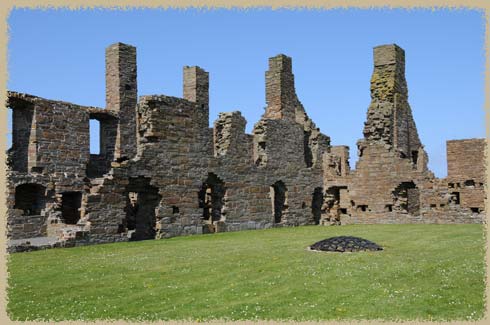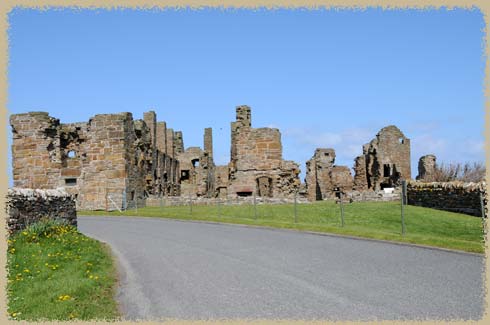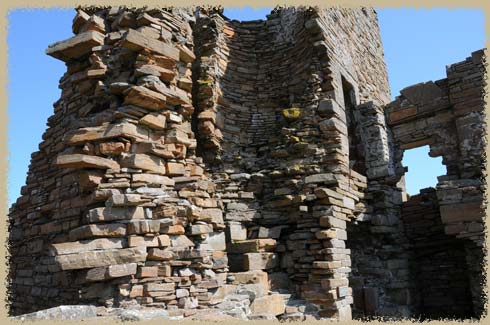Earl's Palace, Birsay

from the interior courtyard, looking at the residences
16th century castle
While called a palace, the ruin here is of a 16th century courtyard castle. There are two ranges of buidlings around the couryard, with towers at three of the corners. The south range measures 6m wide, and the east and west are slightly narrower. The courtyard is large - 19m x 30m -- with a large well in the center.
A long gallery on the first floor was likely the hall, and the opposite range contains vaulted kitchens and cellars. There are two rooms still visible just inside the gate, but otherwise, the ruins are a bit incomprehensible. There are large windows on the second storey, although the lower floors have only shotholes and gunports.
The towers are square, and the two on the southern corners have vaulted basements. The NE corner tower is smaller, but has three storeys instead of two. The southest corner tower held the Earl's private chambers.
The house would have been quite extravagant, and like its counterpart in Kirkwall, would have been a grand building. The rooms were described as having painted ceilings with biblical themes, in 1633. It was much damanged in the 19th century.

view of the massive tower (the earl's personal residence) in the ruin)
Ownership
Robert Stewart, Earl of Orkney (and illegitimate brother of Queen Mary), built the castle here about 1574. It was completed by his sone Patrick. The two men were oppressive rulers of the local people and taxes them mercilessly to pay for the palace here and the other, more lavish house in Kirkwall. Robert died in his bed, peacefully, but his son and his grandson, who carried on as his father had done, oppresing the people of Orkney and continuing to amass power and rival the king. They were executed after rising against the crown in 1615. The palace was used occassionally by later Earls.
By 1701, the building was in disrepair, and it was damaged in a gale in 1868.

the thick wall and remains of a stair tower


